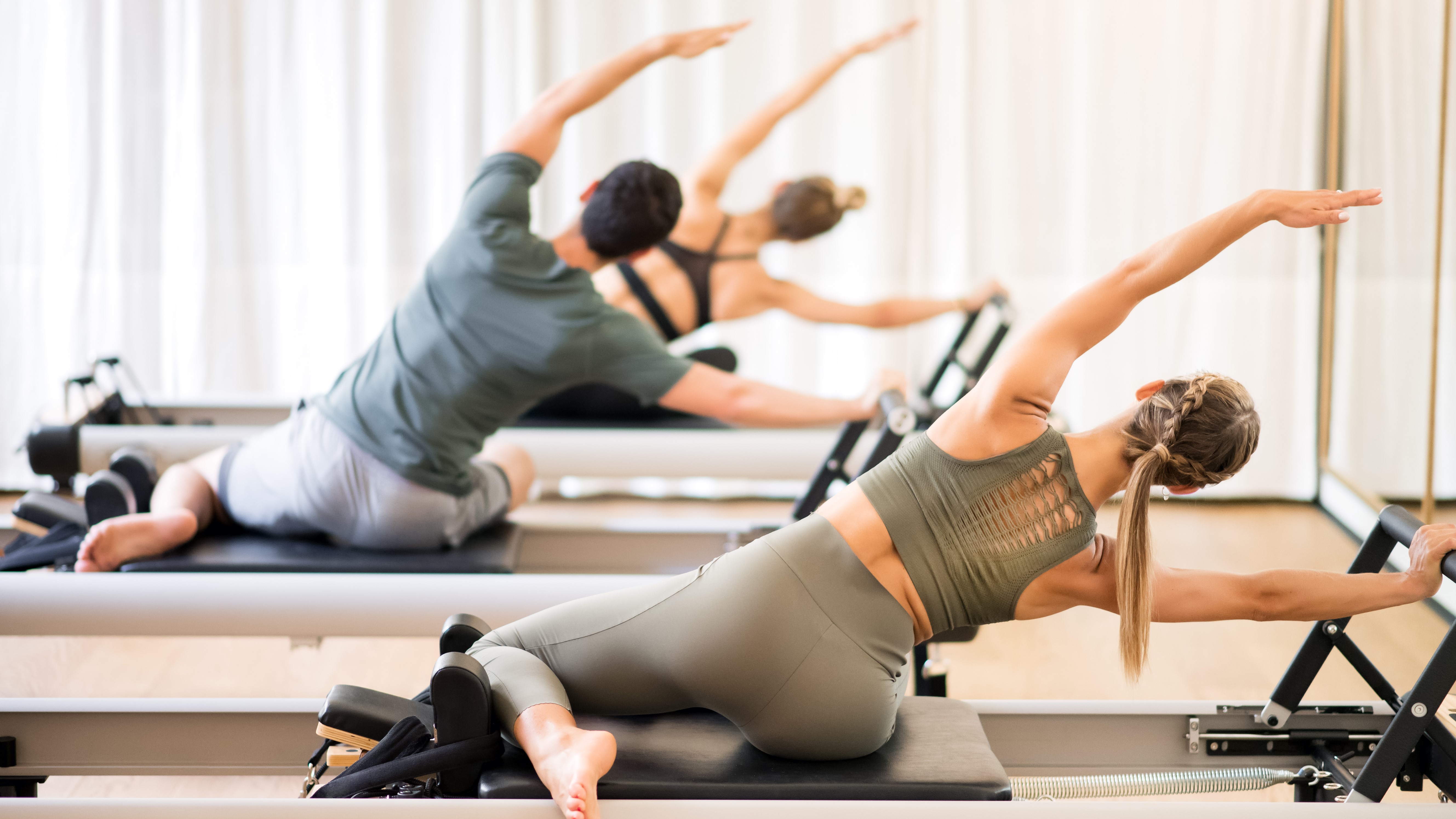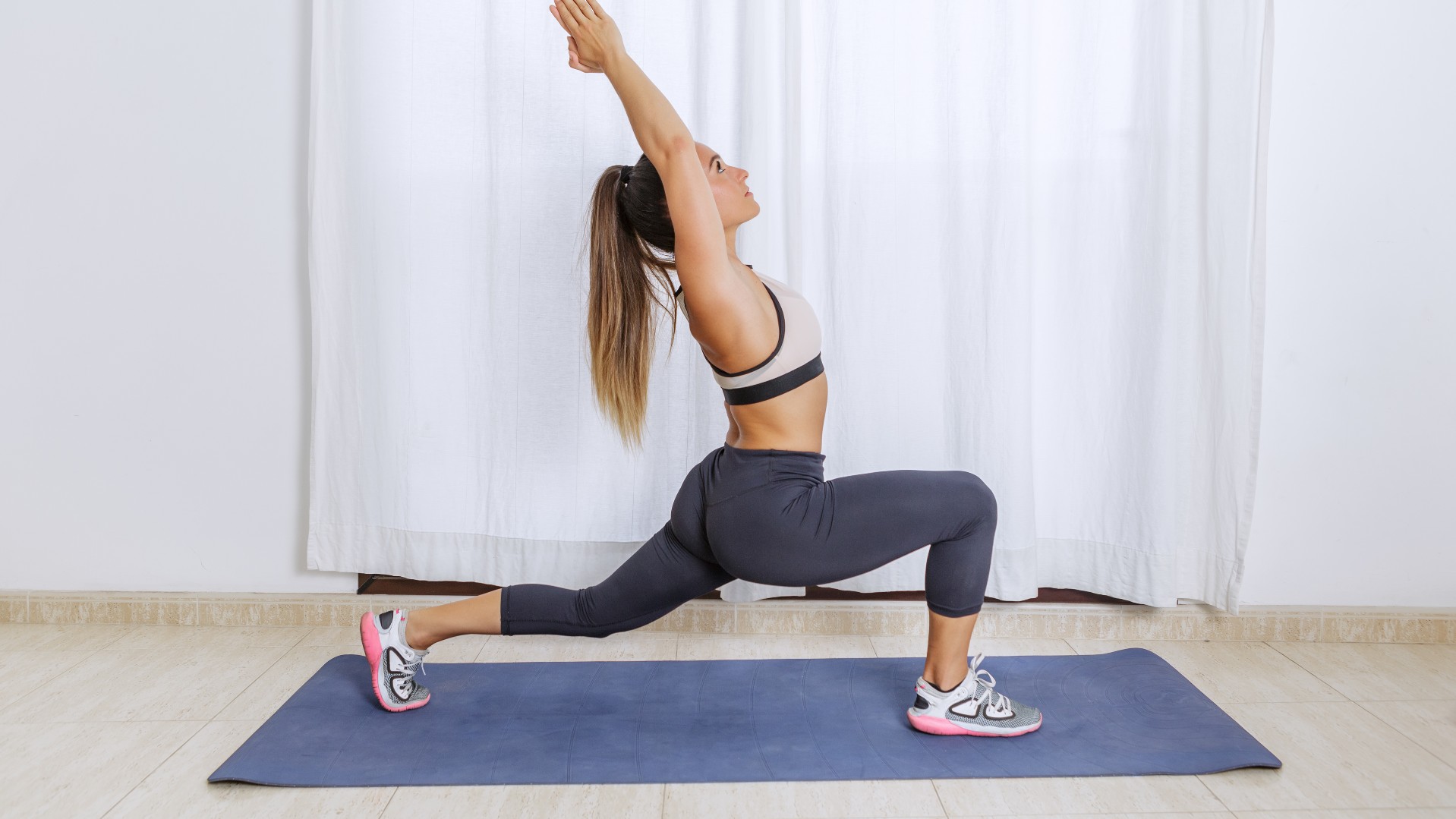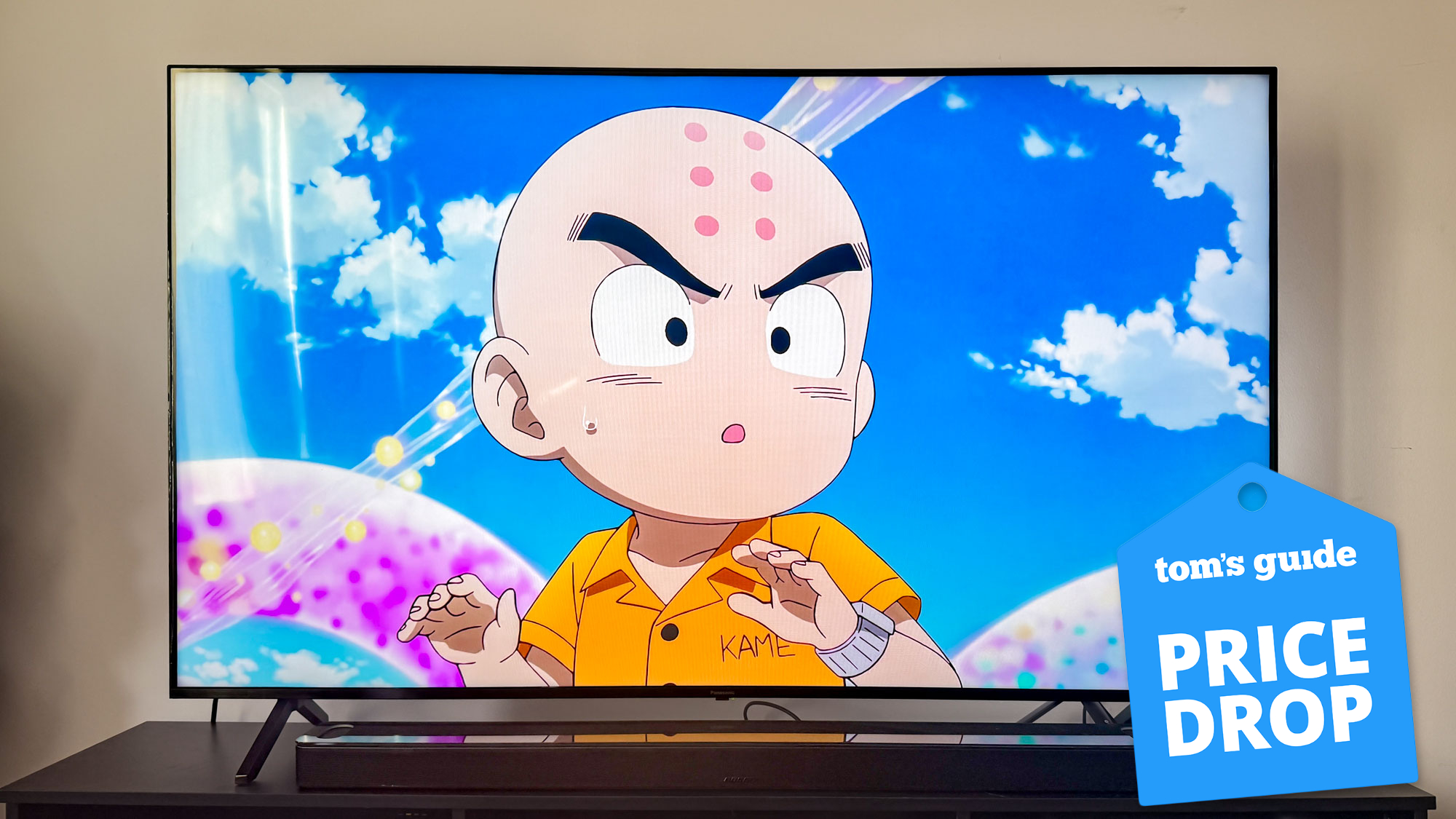Forget the reformer — these 3 Pilates exercises sculpt strong abs with a foam roller

There’s a reason why reformer Pilates is trending just about everywhere in 2023, and it’s not because it’s the go-to workout of Harry Styles, Meghan Markle, and Margot Robbie. Reformer Pilates is a form of Pilates that involves using a platform with springs and a sliding carriage, known as the ‘reformer’. It’s an excellent workout that tones muscles and builds strength without too much impact. Like mat Pilates, regular reformer classes can also increase your flexibility and improve your posture.
That said, there’s a downside — reformer classes are expensive. This is often down to the fact the classes are smaller and the beds are expensive for the studio to buy, and involve some level of upkeep. If you’re on a budget, or you’re still working out from home after the pandemic, you might be looking to get the feel of reformer Pilates, without forking out for a class.
Luckily, we’ve got you covered. Pilates instructor Alice Rose has shared three Pilates exercises you can do at home, using a foam roller, stability ball, or sliding disks instead of a reformer. As always, if you’re new to exercise, or you’re returning to exercise following an injury, it’s a good idea to check your form with a personal trainer to ensure you’re moving with the correct form.
3 Pilates reformer style exercises to try from home
In the video, Rose uses a foam roller in place of a reformer machine. She suggests doing each exercise for a minute to really target your abdominal muscles. Repeat the circuit if you’re looking for a longer workout, or tag this onto the end of an ab workout as a finisher.
A post shared by Alice Rose | Pilates & Fitness (@aliceroseactive)
A photo posted by on
Pike
For this exercise, start in a high plank position, with your wrists underneath your shoulders, and your core engaged. Rest your feet on a foam roller, or place your toes on sliders. Raise your hips to the ceiling, as if you’re doing a downward dog, and roll the foam roller towards your hands slightly as you do so. Pause at the top, then straighten back to your starting position. Keep your core engaged throughout.
Knee pull-ins
Again, return to your starting position in a high plank with your feet on a foam roller. Squeeze your abs, and bend your knees, rolling the foam roller in towards your hands. Pause, then roll your legs back out to a high plank position. Keep repeating this for the full minute, moving slowly and with control.
Pull-in with rotation
For this exercise, repeat the steps above for the knee pull-ins, but once your knees are underneath your body at a 90-degree angle, rotate both out to one side of your body, twisting from your core. Return to the center, then roll your legs back out to a high plank position. Repeat on the other side. Keep alternating sides for the full minute.
Get instant access to breaking news, the hottest reviews, great deals and helpful tips.
What are the benefits of Pilates?

Whether you’re practicing reformer Pilates, or Pilates on an exercise mat, one huge benefit is that you’re building a stronger core. Unlike doing endless crunches, Pilates is a full-body workout, with a focus on the deep core muscles. As well as being an aesthetic goal, a strong core can improve your posture, strengthen your spine, and decrease your risk of injury.
As Pilates has a focus on working opposing muscle groups, it can also help correct muscle imbalances. Whether you’re a runner, a cyclist, or a tennis player, you’ll often have one stronger side of the body. This is normal, but muscle imbalances can lead to injury, so strengthening both sides of the body and building a stronger core can help.
Pilates can also boost your mood and enhance awareness in the body. Founder Joseph Pilates said the workout was about the "complete coordination of body, mind, and spirit." During a Pilates class, they’ll be a lot of focus on thinking about the muscles moving and using your breath throughout the class to integrate the body and the mind.
More from Tom's Guide
- 9 best Pilates exercises that target your core for the ultimate burn
- Here’s what an hour of Pilates can do for your body
- Forget back pain — 7 best Pilates exercises to boost flexibility and strengthen your lower back

Jane McGuire is Tom's Guide's Fitness editor, which means she looks after everything fitness related - from running gear to yoga mats. An avid runner, Jane has tested and reviewed fitness products for the past five years, so knows what to look for when finding a good running watch or a pair of shorts with pockets big enough for your smartphone. When she's not pounding the pavements, you'll find Jane striding round the Surrey Hills, taking far too many photos of her puppy.
